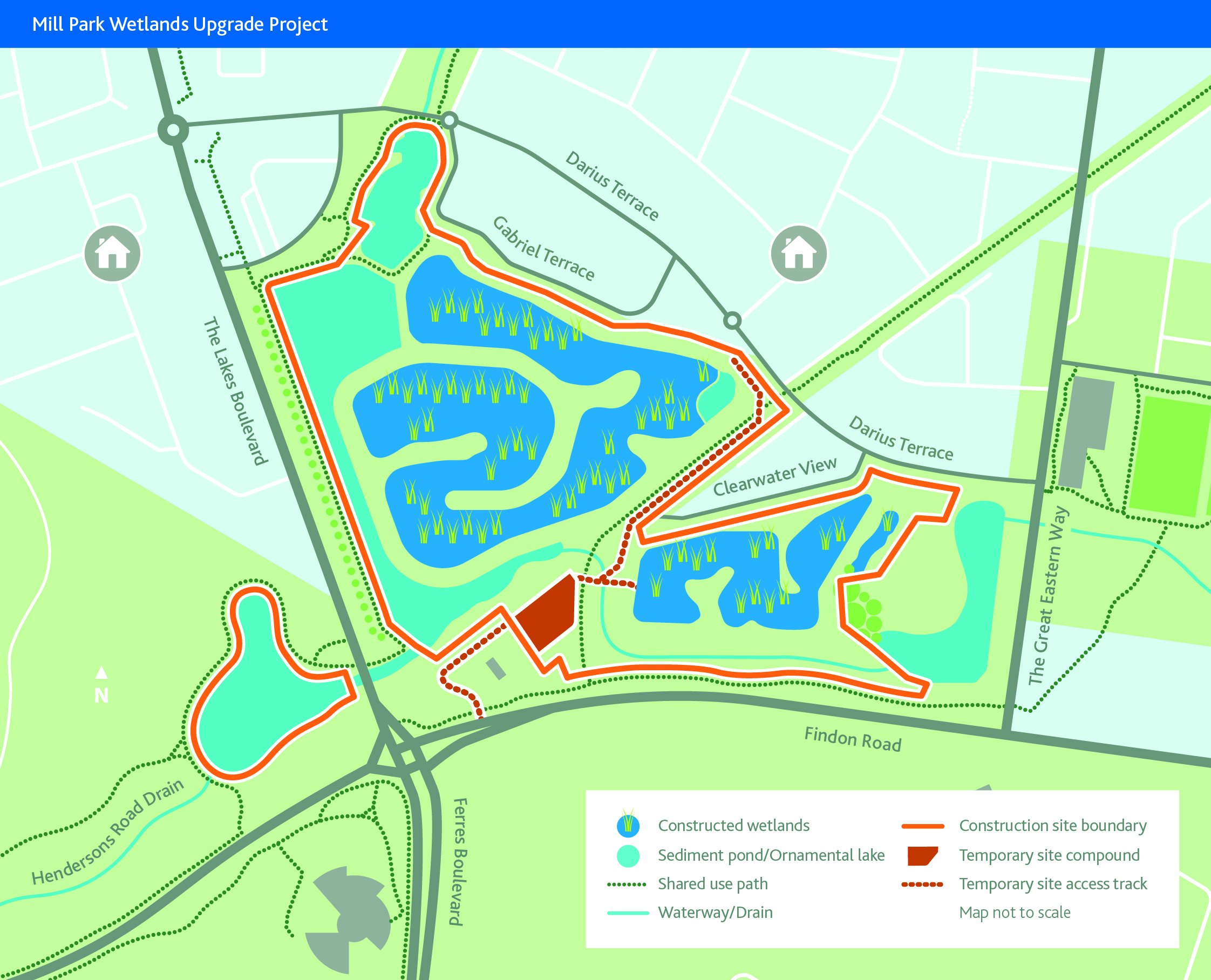To continue our vital work of safeguarding our waterways, Melbourne Water is enhancing the Mill Park Wetlands, located in The Lakes Reserve in South Morang.
About this project
A constructed wetland is a series of shallow, densely planted, man-made ponds that help filter stormwater. Wetlands act like ecological kidneys, filtering out pollutants that wash into stormwater from roads, concrete, parks and gardens. This project will make sure that the Mill Park Lakes and Wetlands keep working the way they were meant to, filtering out nitrogen and harmful pollutants and keeping our rivers and creeks healthy.
Why is this work necessary?
Upgrade works will ensure that the Mill Park lakes and wetlands function effectively and provide high quality stormwater treatment.
- The wetland levels are being adjusted to create a healthy environment for plants to thrive.
- 120,000 additional plants will be added to the wetlands to filter water and improve the water quality.
What do the works involve?
- Removing vegetation within the current wetland where it is creating bottlenecks and preventing water flow.
- Reducing the water level of the lakes, temporarily drying the wetlands, so work can be completed.
- Reshaping the base of the wetlands with machinery to reduce water depth and support plant growth.
- Upgrading the wetland inlets, outlets and pipes to renew old infrastructure and better manage water flow.
- Revegetating the wetlands with new plants which will support the filtering of pollutants.
Local impacts
We will make every effort to minimise the impact of these essential works on the local community and the environment. However, during construction you may notice:
- Closures of some paths around the wetlands
- Noise from construction activity
- Dust
- Increased truck movements
- Some odour as stockpiled sediment dries out
- Removal of some vegetation.
Working hours
The majority of the works will be completed during standard construction hours of Monday to Friday, between 7am and 6pm, and Saturdays from 7am to 1pm.
We do not anticipate any impact on your water or sewerage services during these works.
Frequently Asked Questions
- What is a wetland?
-
Wetlands are not merely constructed lakes. They have a specific function in removing pollutants from stormwater. Without wetlands, pollutants would flow directly into Darebin Creek and the Yarra River, and eventually into Port Phillip and Westernport bays, where they can be more harmful to the community and environment.
- How is a wetland different from a lake or pond?
-
Many new developments have wetlands, which provide open spaces for the community. They also play an important role in stormwater treatment. Unlike lakes or ponds, wetlands remove pollutants from stormwater before it reaches rivers, creeks and eventually the ocean.
- What are the benefits of healthy wetlands?
-
Healthy wetlands are good for the environment and the community in many ways. They:
- Improve the health of our local waterways.
- Encourage biodiversity and a place for native plants and animals to thrive.
- Make the area more attractive, creating a place where people can exercise, explore and relax.
- Why will vegetation need to be removed to upgrade the wetlands?
-
Where vegetation is creating a bottleneck and preventing water from flowing, it will need to be removed. We are working with the council to obtain a planning permit.
- How will removed vegetation be reinstated?
-
Yes, where vegetation has to be removed, replacement vegetation will be planted on the embankment as close to its original position as possible.




